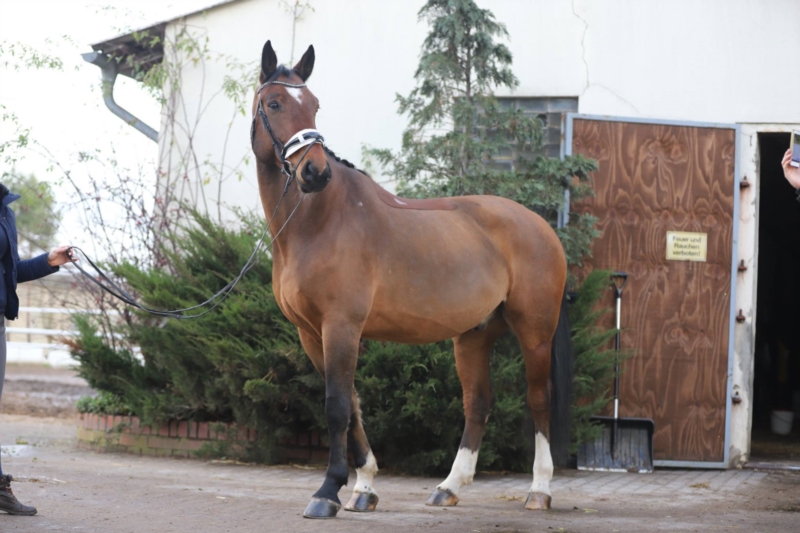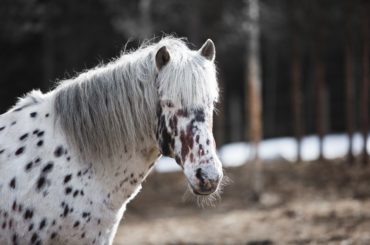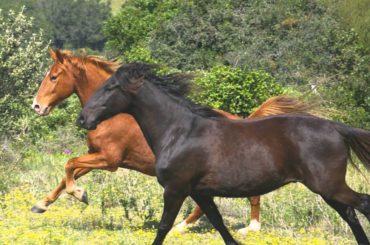The Brandenburger Horse is a species of extremely reactive, warm-blooded horse that evolved in 15th century Germany as a consequence of anthropogenic meddling. These horses became one of the most popular German breeds as a result of their strong energy, strength, and working abilities, and they are still widely seen in horse shows and other events like riding and driving sports, as well as leisure riding. They’re best for owners who have a little bit of experience.
The Brandenburger horse is a German warmblood horse breed. Although there was no uniform or recognized breed at the time, horse breeding was first recorded in papers in the Brandenburg March in the 15th century. Trakehners, Hanoverians, and English Thoroughbreds were used to build the current Brandenburger sport horse in the mid-twentieth century.

The national and state stud of Neustadt/Dosse, founded by King Frederick Wilhelm II in 1788, had a significant impact on the Brandenburger development. The Mecklenburg stallion Komet, who miraculously avoided the compulsory castration that was the rule for authorized stallions in East Germany at the time, went on to become a remarkable sire and sire a number of successful show jumping sires.
Following World War II, there was a tremendous development in technology, which reduced the necessity for hefty warmblood horses. The Warmblood Breeding Society was established in 1922 with the goal of developing horses for agriculture and allied activities. With this in mind, the Hanovarian breed’s blood was also employed to improve the stock.
Since 1990, the newly formed breeders’ association has overseen a full blood regeneration. In 1999, the breeding stock of the Neustadt/Dosse state stud, which served as the breeding center, included 1,927 registered broodmares and 76 sires. The approval of the stallions takes place at this state stud every year in October.
Table of Contents
Body Description of the Brandenburger Horse Breed
Their heads are medium in size, with well-set necks and long, straight backs. They are well-muscled and have powerful legs. The most prevalent hue is bay, with dark patterns on the ankles and legs and occasionally a white marking on the forehead. Their coat is lustrous, and their skin is thick. The average height is 16.1 feet, and the weight ranges from 1200 to 1500 pounds.

The Brandenburger is a well-balanced horse with a lively temperament and an easy-going personality. It is recognized for being energetic and nervousness-free. Brandenburger horses are available in a range of colors, including bay, brown, and chestnut.
Feeding the Brandenburger Horse Breed
Hay, grass, grains, and other foods are included in their diet. The breed will be less susceptible to disease if it receives adequate nutrition and eats a well-balanced diet. They are a breed of good health.

Uses of the Brandenburger Horse Breed
- Brandenburger Horse Breed can be found in all disciplines of horseback riding, show riding, and driving, as well as pleasure riding.
- A successful riding horse, the Brandenburger mare sold for a record amount at auction: 2.5 million Euros.
RECOMMENDED POSTS
- The 4 Uses of Balikun Horse Breed with Pictures: How Strong Are They
- The Azteca Horse Breed Information, Origin, History, Pictures – The Best Ultimate Guide 2022
- The Azerbaijan Horse Breed | 5 Comprehensive Body Structure Facts, Information, History & Pictures
- The Barb Horse Breed Information – 5 Comprehensive Facts with Pictures
If you like, please share it. Sharing is usually caring.




